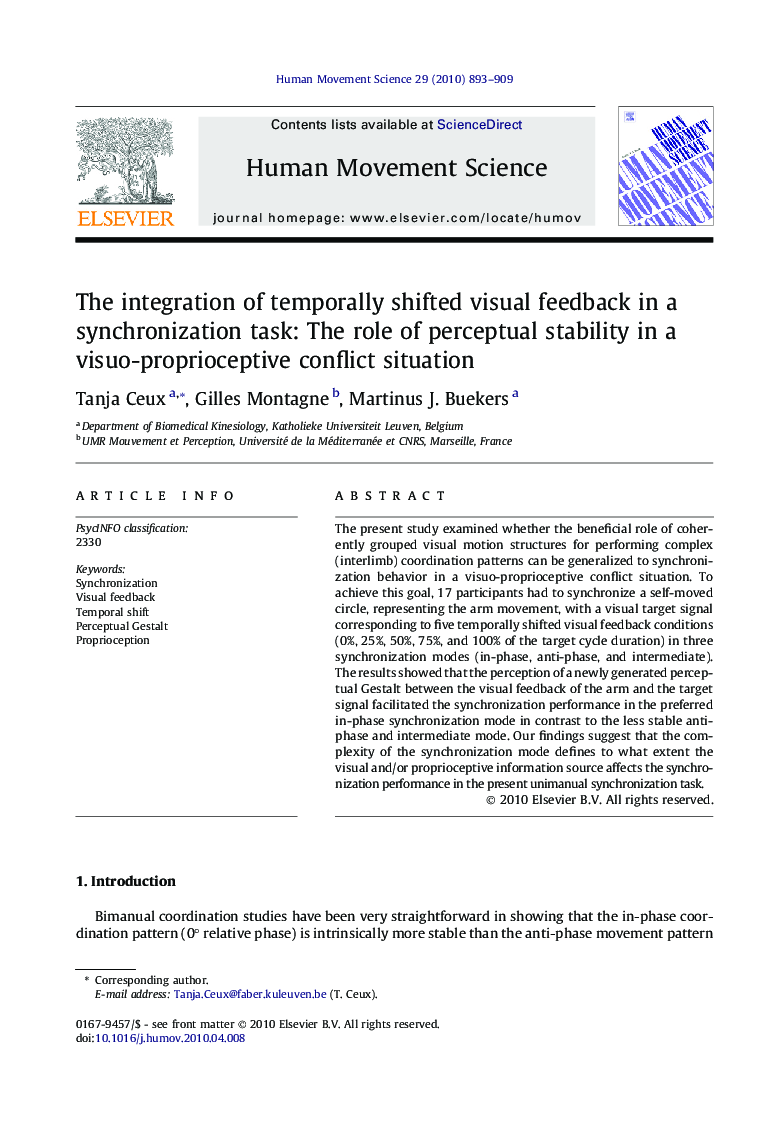| Article ID | Journal | Published Year | Pages | File Type |
|---|---|---|---|---|
| 928632 | Human Movement Science | 2010 | 17 Pages |
The present study examined whether the beneficial role of coherently grouped visual motion structures for performing complex (interlimb) coordination patterns can be generalized to synchronization behavior in a visuo-proprioceptive conflict situation. To achieve this goal, 17 participants had to synchronize a self-moved circle, representing the arm movement, with a visual target signal corresponding to five temporally shifted visual feedback conditions (0%, 25%, 50%, 75%, and 100% of the target cycle duration) in three synchronization modes (in-phase, anti-phase, and intermediate). The results showed that the perception of a newly generated perceptual Gestalt between the visual feedback of the arm and the target signal facilitated the synchronization performance in the preferred in-phase synchronization mode in contrast to the less stable anti-phase and intermediate mode. Our findings suggest that the complexity of the synchronization mode defines to what extent the visual and/or proprioceptive information source affects the synchronization performance in the present unimanual synchronization task.
